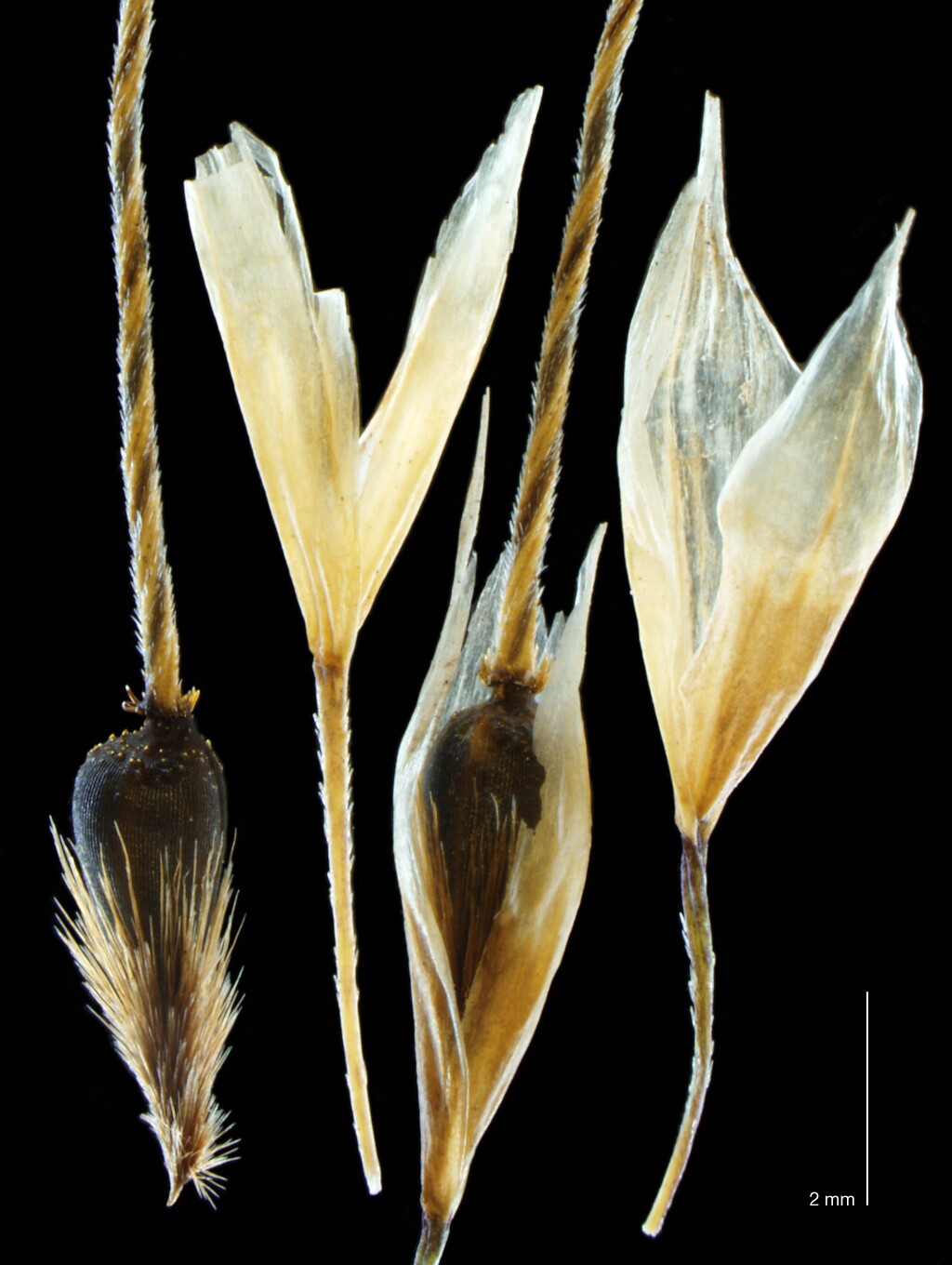Piptochaetium bicolor
(Vahl) E. Desv.Tufted perennial to 30–50 cm high. Leaf-blades glabrous, loosely to closely inrolled, c. 0.5–0.7 mm diam.(1–1.5 mm when flattened); sheaths glabrous; ligules firmly membranous, obtuse, c. 1 mm long. Inflorescence an open panicle, 10-12 x 3–5 cm, nodding. Glumes 7–9 mm long, 3(–5)-nerved, subequal, broad and inflated around the lemma, shortly to long-acuminate, purplish when young; lemma obconical, 3.7–5 mm long, plump (slightly laterally compressed), finely longitudinally striate, tuberculate near apex otherwise glabrous, dark brown at maturity, glossy; corona 0.3–0.7 mm long, collar c. 0.1–0.2 mm long, with a series of ascending minute spines to 0.5 mm long, callus acute, 1.5–1.7 mm long, with rusty hairs to c. 2 mm long, obscuring most of lemma length; awn bigeniculate, 30–40 mm long, scabrous-pubescent, twisting in the lower half, persistent. Flowers late Aug.-Dec. (2 records)
VVP, HSF. Native to Argentina, Chile, and Uruguay. Currently known in Australia only from a Themeda triandra-dominated grassland site in the western Melbourne suburb of Altona North, collected in 2014, and a 2020 collection from a farm paddock at Arthurs Creek (north-east of Melbourne).
Distinguished from Piptochaetium montevidense and P. uruguense by the characters given in key.
 Spinning
Spinning